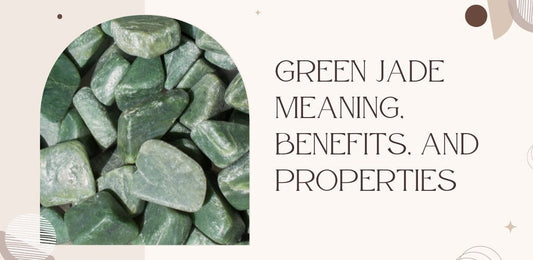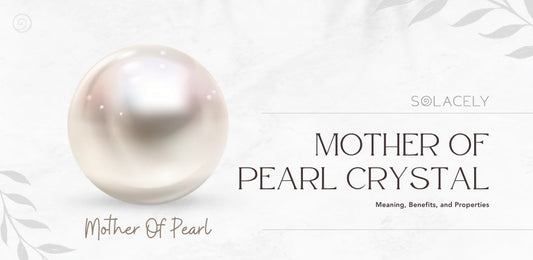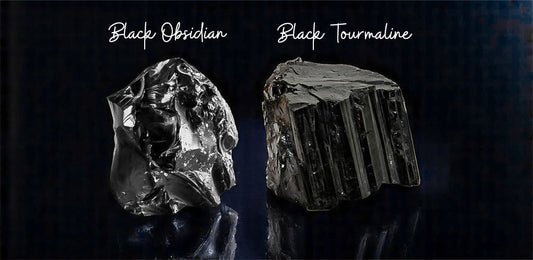Crystals have been revered for their beauty, metaphysical properties, and healing benefits for centuries. With the rise in popularity of crystals in modern times, the market has seen an influx of both genuine and fake crystals. Whether you're a seasoned collector or a beginner, knowing how to distinguish a real crystal from a fake one is essential. This comprehensive guide will walk you through various methods to identify genuine crystals, ensuring you invest in authentic pieces that carry the true energy and benefits you're seeking.
Understanding Crystals
Before diving into identification methods, it's important to understand what crystals are. Crystals are solid materials whose atoms are arranged in highly ordered, repeating patterns. This unique structure gives crystals their distinctive shapes and properties. Crystals form naturally through geological processes, often taking millions of years to develop. They come in various shapes, sizes, and colors, each with unique characteristics and energies.
Commonly Faked Crystals
While many crystals are commonly faked, here are a few that are particularly prone to being counterfeited:
- Quartz Varieties: Clear Quartz, Rose Quartz, Amethyst, and Citrine.
- Lapis Lazuli: Often faked using dyed jasper or glass.
- Turquoise: Commonly faked using dyed howlite or plastic.
- Malachite: Often imitated with resin or plastic.
- Sapphire and Ruby: Sometimes synthetically produced or glass-filled.
Methods to Identify Real Crystals
There are several techniques you can use to determine if a crystal is real. These methods range from simple visual inspections to more complex scientific tests. Below, we cover the most effective ways to authenticate your crystals.
Visual Inspection
One of the easiest ways to identify a real crystal is through a visual inspection. Here are some aspects to look out for:
- Color: Real crystals often have natural, subtle color variations, while fake ones tend to have more uniform and vivid colors.
- Transparency: Genuine crystals usually have some inclusions, cloudy areas, or other natural imperfections. Completely clear crystals without any flaws are often synthetic.
- Pattern: Natural crystals have organic, unique patterns. Fake crystals might have repeated, symmetrical patterns that look too perfect.
Temperature Test
Real crystals generally feel cooler to the touch compared to fake ones made of plastic or glass. Here’s how to conduct the temperature test:
- Step 1: Hold the crystal in your hand for a few minutes.
- Step 2: Observe how long it takes for the crystal to warm up.
- Real Crystal: It takes longer to warm up and retains its coolness.
- Fake Crystal: Warms up quickly to the touch.
Hardness Test
The Mohs scale of mineral hardness can help you identify real crystals. This test involves scratching the crystal with a material of known hardness:
- Real Crystals: Will not scratch easily and will scratch softer materials.
- Fake Crystals: Often scratch easily and fail to scratch harder materials.
For example, quartz has a hardness of 7 on the Mohs scale, so it should not be easily scratched by a steel knife (which has a hardness of 5.5).
Magnification Test
Using a magnifying glass or jeweler’s loupe, you can examine the surface of the crystal more closely:
- Inclusions: Real crystals often have inclusions or internal flaws, which are visible under magnification.
- Bubbles: The presence of bubbles usually indicates glass or plastic.
- Lines and Patterns: Real crystals have natural growth lines, while fake ones might have mold lines from manufacturing.
Weight Test
Real crystals are denser and heavier than fake ones made of plastic or resin. Here’s how you can check the weight:
- Step 1: Hold the crystal in your hand.
- Step 2: Compare its weight to a similarly sized object known to be real.
- Real Crystal: Feels heavier and more substantial.
- Fake Crystal: Feels lighter and less dense.
Light Test
Examine how light interacts with the crystal:
- Transparency: Real crystals often have natural transparency with inclusions. Completely transparent crystals with no flaws are likely synthetic.
- Refractive Index: Real crystals refract light in specific ways. For instance, quartz should not display rainbow colors inside the crystal unless it’s cut specifically to do so.
- Fluorescence: Some real crystals glow under UV light. For example, genuine fluorite glows under black light.
Acetone Test
Acetone can help distinguish between dyed or treated crystals and natural ones:
- Step 1: Dab a cotton ball with acetone.
- Step 2: Rub it on a small, inconspicuous crystal area.
- Real Crystal: No color should come off.
- Fake Crystal: Dye or color may come off onto the cotton ball.
X-Ray Diffraction (XRD) and X-Ray Fluorescence (XRF)
These are advanced scientific methods used to determine the crystal structure and composition. These methods are typically performed by professionals in a lab setting.
- X-Ray Diffraction (XRD) : Determines the arrangement of atoms in the crystal, confirming its authenticity.
- X-Ray Fluorescence (XRF) : Identifies the elemental composition of the crystal, which can confirm its type and authenticity.
Practical Examples of Identifying Real Crystals
Identifying Real Amethyst
- Color: Real amethyst ranges from light to deep purple. Be wary of overly uniform or vivid purple stones.
- Inclusions: Natural amethyst often has inclusions and color zoning.
- Temperature: Real amethyst will feel cool to the touch.
- Hardness: Amethyst should not scratch easily as it has a Mohs hardness of 7.
Identifying Real Rose Quartz
- Color: Genuine rose quartz is soft pink. Be cautious of very bright or neon-pink stones.
- Transparency: Rose quartz is typically milky and translucent, not completely transparent.
- Inclusions: Look for natural inclusions and cloudy areas.
- Weight: Real rose quartz feels heavier than plastic or resin imitations.
Identifying Real Turquoise
- Color: Real turquoise ranges from sky blue to greenish-blue with black or brown veins.
- Magnification: Real turquoise should have natural patterns and matrix (veins) that can be seen under a magnifying glass.
- Temperature: Real turquoise feels cool to the touch.
- Acetone Test: Dye should not come off if the turquoise is real.
Buying from Reputable Sources
One of the best ways to ensure you are purchasing real crystals is to buy from reputable sources. Here are some tips:
- Research the Seller: Look for reviews, ratings, and customer feedback.
- Certifications: Reputable sellers often provide certifications of authenticity.
- Return Policy: A good return policy indicates that the seller is confident in the authenticity of their products.
- Physical Stores: Visiting a physical store allows you to inspect the crystals in person.
Identifying real crystals requires a combination of visual inspection, physical tests, and sometimes advanced scientific methods. By learning these techniques, you can ensure that the crystals you purchase are genuine and possess the desired properties.
Remember, the more you handle and study crystals, the more familiar you will become with their unique characteristics. This experience, combined with the knowledge from this guide, will help you become adept at distinguishing real crystals from fakes.
Investing in authentic crystals not only ensures you receive the metaphysical benefits they offer but also honors the natural beauty and geological history of these remarkable formations.








